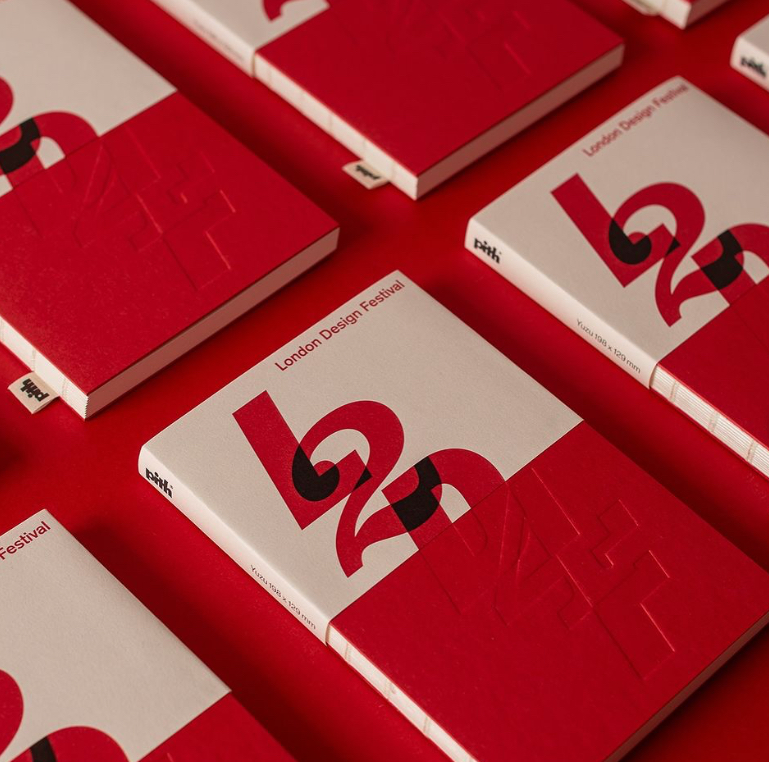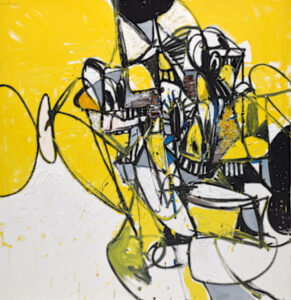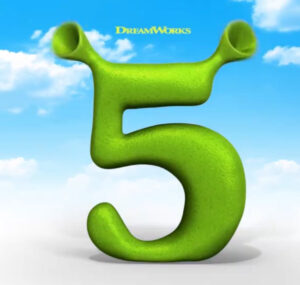The 2024 London Design Festival, one of the most anticipated events on the global design calendar, has taken a bold and thought-provoking approach this year by centering its visual identity around the concept of “duality.” This theme, spearheaded by Domenic Lippa, a partner at the renowned design firm Pentagram, serves as both a visual and conceptual foundation for the festival’s branding and overall experience. Duality, in its simplest form, refers to the presence of two opposing elements that coexist and interact with each other. In the case of the 2024 festival, the interplay between contrasting ideas—black and white, tradition and innovation, simplicity and complexity—is brought to life through a sophisticated and striking design language.
The use of duality as a driving force behind the festival’s design is a perfect encapsulation of what the London Design Festival represents. London itself is a city defined by its contrasts: historic yet modern, orderly yet chaotic, traditional yet cutting-edge. This duality is mirrored in the city’s vibrant design scene, which constantly pushes the boundaries of creativity while remaining grounded in the rich cultural heritage of the United Kingdom. Lippa’s vision to capture this essence through the festival’s visual identity is not only inspiring but also deeply reflective of the conversations and innovations taking place in the design industry today.
In this analysis, we go into depth how the concept of duality informs the design approach for the 2024 London Design Festival, examine the impact of Lippa’s vision on the festival’s visual identity, and consider how this theme resonates with broader trends in the design world. By examining the use of color, typography, and the overall aesthetic choices made for the festival, we will also explore how duality serves as a metaphor for the diverse and dynamic nature of contemporary design.
The Visual Identity: Black, White, and Red
One of the most immediately striking aspects of the 2024 London Design Festival’s visual identity is its bold color palette, which primarily consists of black, white, and the festival’s signature red. This combination is both timeless and modern, evoking a sense of contrast and balance that is at the heart of the festival’s theme of duality.
Black and white are often seen as symbolic opposites, representing concepts such as light and darkness, simplicity and complexity, or tradition and modernity. By juxtaposing these two colors, the festival creates a visual tension that draws the eye and invites deeper contemplation. The stark contrast between black and white highlights the idea of duality as a fundamental principle in design—one that acknowledges the presence of opposing forces and explores how they interact with and complement one another.
The inclusion of red, a color long associated with the London Design Festival, adds a dynamic and energetic element to the palette. Red is a color that commands attention, often symbolizing passion, excitement, and creativity. In the context of the festival’s visual identity, red serves as a bridge between the black and white elements, injecting a sense of vibrancy and urgency into the overall design. The interplay between these three colors reflects the diverse nature of the design world itself, where contrasting ideas, perspectives, and styles come together to create something new and innovative.
The choice to limit the color palette to these three hues is also a testament to the power of simplicity in design. By stripping away unnecessary elements and focusing on the essentials, the festival’s visual identity becomes a powerful and effective communication tool. It conveys the essence of the festival without overwhelming the viewer, allowing the theme of duality to take center stage.
The Role of Typography: A Dialogue Between Two Worlds
In addition to the bold color palette, the 2024 London Design Festival’s visual identity is further enhanced by the use of two contrasting typefaces, which add depth and complexity to the design. Typography is one of the most important tools in a designer’s arsenal, and the pairing of two distinctly different typefaces is a clever way of visually representing the concept of duality.
The first typeface, which is clean, modern, and geometric, reflects the forward-thinking and innovative nature of contemporary design. This typeface embodies the idea of simplicity and precision, qualities that are often associated with modernist design principles. Its sharp lines and minimalistic aesthetic create a sense of order and clarity, which contrasts with the more expressive and organic qualities of the second typeface.
The second typeface, by contrast, is more ornate and traditional, with flowing curves and a sense of craftsmanship. This typeface evokes a sense of history and heritage, reminding viewers of the rich legacy of design that has shaped the world we live in today. Its inclusion in the festival’s visual identity is a nod to the importance of tradition and craftsmanship in design, even as the industry continues to evolve and embrace new technologies.
The pairing of these two typefaces creates a visual dialogue that mirrors the ongoing conversation between different perspectives, styles, and ideas within the design community. It speaks to the idea that design is not a singular, monolithic entity, but rather a constantly evolving discipline that draws from a wide range of influences and traditions. By juxtaposing the modern and the traditional, the festival’s visual identity invites viewers to reflect on the ways in which design is shaped by both the past and the present, and how these elements can coexist and inform one another.
The Concept of Duality in Design
The theme of duality is not only central to the visual identity of the 2024 London Design Festival, but it also resonates with broader trends and conversations within the design world. Design, by its very nature, is a discipline that often involves balancing opposing forces. Whether it’s the tension between form and function, simplicity and complexity, or innovation and tradition, designers are constantly navigating dualities in their work.
One of the key ways in which duality manifests in design is through the relationship between form and function. Historically, designers have often been forced to choose between creating something that is aesthetically pleasing and something that is functional and practical. However, many contemporary designers are challenging this binary thinking by embracing the idea that form and function can coexist harmoniously. The 2024 London Design Festival, with its focus on duality, highlights this trend by showcasing designs that are both visually striking and highly functional.
Another important aspect of duality in design is the tension between simplicity and complexity. In recent years, there has been a growing trend towards minimalist design, with an emphasis on clean lines, uncluttered spaces, and a focus on the essentials. However, there is also a counter-trend that embraces complexity and ornamentation, with designers creating intricate, layered works that are rich with detail and meaning. The London Design Festival’s visual identity, with its simple color palette and contrasting typefaces, reflects this ongoing dialogue between simplicity and complexity, encouraging viewers to consider the value of both approaches.
Finally, the concept of duality is also evident in the relationship between innovation and tradition. As technology continues to advance at a rapid pace, designers are constantly exploring new tools and techniques to push the boundaries of what is possible. However, many designers also recognize the importance of drawing from the past and preserving traditional methods of craftsmanship. The London Design Festival, with its celebration of both modern and traditional design, exemplifies this balance between innovation and tradition, demonstrating that the two can coexist and inform one another.
The Role of the London Design Festival in the Global Design Community
The London Design Festival has long been a platform for showcasing the best of international design talent, and the 2024 festival is no exception. By embracing the theme of duality, the festival highlights the diversity of perspectives and approaches that drive the design industry forward. It serves as a reminder that design is not a monolithic field, but rather a dynamic and constantly evolving discipline that is shaped by a wide range of influences and ideas.
The festival’s role in fostering dialogue and collaboration between designers from different backgrounds and disciplines is one of its greatest strengths. By bringing together designers from around the world, the festival creates an environment in which new ideas can be exchanged and new collaborations can be forged. This spirit of collaboration is essential to the future of design, as it allows designers to learn from one another and push the boundaries of what is possible.
In addition to showcasing cutting-edge design work, the festival also serves as a platform for exploring important issues facing the design community. Themes such as sustainability, inclusivity, and the role of technology in design are central to many of the installations and exhibitions at the festival. By engaging with these topics, the festival encourages designers to think critically about the impact of their work on the world around them and to consider how they can contribute to a more sustainable and equitable future.
The Sensory Feast of 2024: Installations and Exhibitions
Beyond the festival’s visual identity, the 2024 London Design Festival promises to be a feast for the senses, with a wide range of installations, exhibitions, and events that showcase the best of international talent. The theme of duality will be explored in various ways throughout the festival, from large-scale public installations to more intimate gallery exhibitions.
One of the most anticipated installations is a collaboration between a contemporary digital artist and a traditional sculptor, which will explore the intersection of technology and craftsmanship. This installation will use cutting-edge digital fabrication techniques to create intricate, three-dimensional forms that reference traditional sculptural methods. By juxtaposing the old and the new, the installation will invite viewers to reflect on the ways in which technology is transforming the design process while still honoring the importance of traditional craftsmanship.
Another highlight of the festival will be an exhibition focused on sustainable design solutions. This exhibition will feature a range of projects that explore how designers are responding to the environmental challenges of the 21st century by creating products and systems that minimize waste and reduce the use of resources. The exhibition will showcase both high-tech innovations, such as biodegradable materials and circular economy solutions, and low-tech, traditional methods that have been used for centuries to create sustainable, functional designs.
Impression
The 2024 London Design Festival’s focus on duality is a fitting theme for an event that seeks to celebrate the diversity and complexity of the design world. Through its bold visual identity, featuring the interplay of black, white, and red, as well as its pairing of contrasting typefaces, the festival captures the essence of what makes design such a dynamic and ever-evolving field. By embracing the concept of duality, the festival invites viewers to reflect on the many opposing forces that drive innovation and creativity in design, from simplicity and complexity to tradition and modernity.
As the festival continues to push the boundaries of design and celebrate the power of creativity to shape our world, it remains a vital platform for fostering dialogue and collaboration within the global design community. With a wide range of installations, exhibitions, and events that showcase the best of international talent, the 2024 London Design Festival promises to be a sensory feast and a celebration of the power of duality in design.
No comments yet.







